Siberian Army of the Great War, or Seven facts about the Siberian shooters. H. 1
The fighters stood out for his fighting qualities, even against the background of the main mass of the beautiful Russian Army infantry. Thunderstorm of the enemy, deciding the fate of many battles and battles. We draw attention to, in our opinion, the most important and significant facts that characterize the Siberian infantry units and compounds in 1914-1917.
Fact No. 1. During the First World War, the whole Siberian army turned up without exaggeration at the front - 7 Siberian army corps (SibAc): 24 Siberian rifle divisions (including the Combined) (92 Siberian rifle regiment and 4 combined Siberian rifle regiment).
Niva 1915. No. 16.
Fact No. 2. What distinguished the Siberian infantry units from the rest of the infantry?
First, at the beginning of the war, the Siberian rifle units had a military command staff with experience of the Russian-Japanese war (replenished after mobilization and front-line gunners).
Secondly, the Siberian rifle regiments had teams of mounted reconnaissance (each - 100 - 150 people) - only after a year of fighting in the infantry regiments, similar teams of mounted reconnaissance appeared. We wrote about the great importance of such a mobile and strong team of equestrian reconnaissance teams of the 2 Siberian Rifle Division during the Second Prasnysh operation (see Lampas under Prasnyshem. H. 2).
The Siberian shooter is a fighter of the cavalry scout team.
Thirdly, already in 1915, many Siberian infantry units had their own escort artillery - 37-mm guns, moving in the battle formations of the troops (their use during the Second Prasnysh operation in February-March of 1915 was an important factor for the success of the Siberians). The bulk of infantry regiments received 37-mm guns (4 - 6 guns in the regimental battery) only in 1916 g.
Siberian arrows
Fact No. 3. Siberian connections played a huge role in the outcome of a number of landmark operations.
Thus, the Siberian corps arrived on time - in order to save the third capital of Russia (the first two - St. Petersburg and Moscow) - Warsaw in September 1914 in the Warsaw-Ivangorod operation 15. 09. - 26. 10. 1914
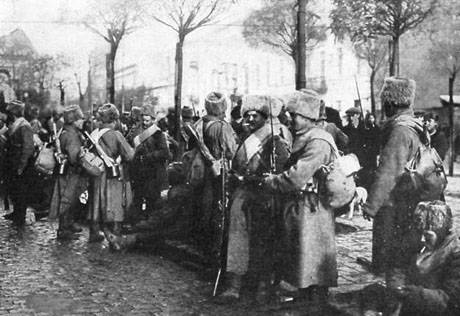
Siberian arrows in Warsaw. September 1914
1-th Sibac distinguished itself under Piaseczno. His fighters, straight from the trains, without the support of artillery, rushed into battle - and saved the situation.
2-th Sibac fought under the Groits. According to the documents, the corps lost up to 10000 people - but was rescued by the 1-m SibAk.
The counter-offensive of the 2 Army threw the Germans away from Warsaw.
During the bayonet fights in the Mochidlovsky forest, the Siberians captured many prisoners from the German 20 Army Corps (formed in South-Eastern Prussia; Allenstein headquarters). Particularly affected were the German 17 Army Corps (formed in West Prussia; headquarters - Danzig) and reserve units and units - striking in the area of Blon-Pruszkov. Siberian and Great Russian regiments inflicted huge losses on the enemy. And many settlements changed hands many times.
During the First August Operation 12.-30. 09. 1914 d. 3 th SibAc occupied Augustus and went to the rear of the Germans - deciding the fate of this important operation.
The 11 Siberian Infantry Division of the 1 Turkestan Army Corps was rescued by Osovets.
Certificate of fighting 30-th Siberian Rifle Regiment [Kodinets A. The glorious feat of the 30 of the Siberian Rifle Regiment // Military Collection, published by the Highest Command. 1916. March. No. 3. C. 73-86.] reads: “By seven o'clock in the evening (17 of September), already at dusk the artillery fire was abruptly cut off, but the burning gun rifle on the right flank of the regiment indicated the beginning of the German offensive. In thick columns from behind the Crest, near the village of Sucha-Vse, the enemy moved to the crossing over the River Raspuda at Khodorka, with the apparent aim of ousting the regiments that occupied her company from the crossing. However, this attempt ended for the Prussians with complete failure. The 3 th battalion of the regiment, pulled from the reserve, turned around in turn, passed our artillery position, joined the river closely to the bank, and then, crossing the village of Khodorka to the other bank, opened deadly firing and volleys on the advancing Germans. This fire and, in particular, the sustained volleys of the 10 th company made terrible devastation in the ranks of the Germans. Remains chains soon fled in panic, leaving piles of dead and wounded on the field. Behind the ridge, the Germans settled down and, backed up with fresh pieces, again went on the attack, but with the same results. Only at eight o'clock in the evening, when it was completely dark, trying to deprive us of the crossing stopped. The skirmish subsided, completely and only the groans of numerous wounded Germans violated the general silence around them ... ”.
Then new battles, and by the 13 watch of 18 September, only a standard platoon remained in reserve. Fortunately, at this time, the 4 Battalion returned to the regiment and approached the right flank. Relying on the fresh battalion, Colonel M. Izhitsky decided to gradually withdraw the entire regiment from under the crossfire and settle down at the height of the folded farm Göcebor. Fortifying 1-th company in the settlement Runoff, the regiment began to move away rifts. While departing, although the companies were pointed out a new direction, people instinctively turned to face the enemy’s kosurvitelnye shots to the right — they moved far south of the new positions, which made the regiment's order of battlefield too stretched and thrown off the Suwalki road. But “the Prussians, having taken the movement for a forced retreat,” around 17 hours began a vigorous offensive from the settlements of Stoki and Lesser Göcebor, and the left-flank companies wavered, starting to retreat.
And then the regiment commander himself rushed into the chain, starting to cheer the retreating fighters. Three times he stopped retreating and personally led them into bayonet attacks against the Germans. Soft soil, sodden by rain, very difficult to advance. But the Siberian riflemen, dropping all the equipment, attacked with a shout of "Hurray" - with some rifles. As a result, the Germans under these blows quickly stopped their offensive. The units were put in order, consolidated companies were formed - and under the command of the officers they moved forward again, supporting the bayonet attacks of their comrades. Such persistent attacks embarrassed the Germans - and the onslaught of the latter ceased.
6 once, like a stormy stream that washes away everything in its path, a gallant regiment attacked the Germans with its bayonets - and the entire forest was literally littered with the corpses of the enemy. The German offensive was finally broken. And the remnant of the regiment came out of the sphere of fire, settled down to rest south east Kirianovki.
The task was to cover the corps operations from the flank, the 30-m Siberian regiment in the three-day battle with the whole German division was successfully and valiantly executed. Despite the heavy losses, the duty "to the Tsar and the Motherland" was fulfilled - although the regiment suffered heavy losses both in the officer corps and in the rank and file. Covering the flanks and rear of the hull with his own blood, he ensured the success of this operation: without interference from Khodorka, Kirianovka and Shchebra. Mr. Suwalki was taken by the Russians, and the Germans "ran back across their border."
The loss of 17-20 of September, which was expressed in the following figures: the 7-I Siberian division - 9 officers and 123 gunner, 19 officers and 629 gunners were wounded, missing without evidence 130 lower grades At the same time, some healthy Germans were captivated by 700 people (as well as many wounded, especially in the dv. Dovspudy). RI Malinovsky, who fought as an ordinary soldier at Suwalki in 1914, recalled how stubborn the bayonet fights were against Siberians - but the German infantry, inspired by recent successes, did not give up. And then, having figured out with whom he was dealing and having lost combat stability, retreated [Malinovsky R. Ya. Soldiers of Russia. M., 1978. C. 100.].
The Siberians distinguished themselves in the Lodz operation 29. 10. - 06. 12. 1914
29-30 of October, fighting at Wloclavsk, the 5-th SibAK withstood the onslaught of the 3-s of the German corps (2 army and reserve), not allowing to bypass its flanks or break through the front. After the 6 Sibac approach, the situation was stabilized. 5 November The 27 and 28 Siberian regiments attacked the German trenches at the village of Tshershpinen, during the bayonet attack seized redoubts on high. Xnumx and trenches. Siberians captured 158 gun, 21 officer, 1 soldiers [RGVIA. F. 2280. Op. 1. D. 338, l. 16.] and a few machine guns.
And on November 8, during a fierce battle on the left flank of the 5 Army, the 1 Sibac, with the support of the 19 AK, launched a counterstrike, forcing the enemy to indiscriminate retreat with great losses (the German 38-I infantry division was defeated). And the 5 Army paralyzed the southern “claw” of the Germans' offensive near Lodz.
2-th Sibac fought in the 2-th army.
And the 6-I Siberian Infantry Division, which was part of the Lovichi squadron, together with the 63-Infantry Division, achieved considerable success, closing the encirclement around the R. Sheffer-Boyadl group and capturing Kolushki and Brezina (and, during the occupation of Brezin, the division freed 600 and the Russians captured more 100 only non-wounded Germans). But it was not strengthened - and during the night battle of 11 in November, the troops of R. von Scheffer-Boyadel, breaking through the front of the 6-th Siberian, broke out of the encirclement. Moreover, the Siberians successfully fought, capturing 300 prisoners, 2 batteries in the set (with charging boxes and harnesses) and a lot of machine guns, but the Germans bypassed its flanks. The remnants of the compound retreated: part of the 2 Army, and about 1,5 thousand fighters broke through to the Skierniewice.
During the Second August operation 25. 01. - 13. 02. 1915 was again had a chance to excel 3 10 Seebach-th-th army. The corps parried the southern enveloping claw from the side of the enemy’s 10 th army twice, which made it possible to organize the withdrawal of the main forces of the army. As a result, instead of encircling the entire 10 army, the Germans managed to encircle only the lagging 20 army corps. And then the 26 Ak and 3 Sibac supported by the Osovets Fortress stopped the German offensive in front of the r. Beaver.
The second and third Prasnysh operations of February 7 - March 17 and June 30 - July 5 1915, respectively, are bright pages of the military glory of the Siberian shooters. During the first of these, the 1 and 2 of the Sibac turned the tide of the operation, defeating the 2 of the German corps. Trophies of the most distinguished - 1-10000 of Seebach became prisoners of the Germans. In the course of the second operation, 1 of the Sibac, 11 of the Siberian Rifle Division of the 1 of TurkAk and part of the 4 of the Sibac extinguished the activity of the superior forces of the German troops, contributing to the successful withdrawal of the 1 of the army.
The main merit in the successful conduct of the Vilna operation 9. 08. - 19. 09. 1915 belonged to 3 Sibac, 2 AK, Guards and 1 Mounted Cases - which stopped the enemy's reach and ensured the deployment of troops of the 2 Army.
Sibac also operated during the Naroch operation 5 - 17 in March 1916 (1 in the group of M. M. Pleshkov, 4 in the group L.-O. O. Sirelius and 3 in the group P. S. Balueva), as well as during the summer campaign of 1916
In the Mitava operation in December 1916, the 6 SibAC (3 and 14 Siberian rifle divisions), which was reinforced by the Latvian rifle division, attacked Mitava. The 5 of the Siberian division of the 2 of the Sibac had a decisive offensive to ease the main attack. On a dark night on December 23, in the case of 20-degree frost, arrows without shots rushed forward. The success was complete - the German 60 Corps was crushed (its 106 Division was completely crushed and lost all its artillery). The Russians took over 1000 prisoners and 33 guns - of which 15 were captured by the especially distinguished 56 Siberian Rifle Regiment. The Germans were “outsmarted”, as well as 40 machine guns and 18 mortars. Moreover, the 6-th Sibac broke through the German defense at once in 2-s places.
During the July 10 offensive of 1917, the 1 SibAc units managed to capture the Novospassky forest and Krevo fortifications, capturing 14 officers and 1250 privates, 50 machine guns and 20 German bombers.
And in the Riga operation 19 - 24 in August 1917, the fighters of the 2 and 6 of the Sibac reaffirmed their high combat reputation - despite the tendencies characteristic of the decaying bulk of the Army. On the shoulders of the 2-th Sibac commander, Lieutenant-General V. F. Novitsky, the burden of carrying out the operation largely lay down — from which the 12 Army managed to get out relatively safely, avoiding the operational environment. The detachment, headed by the commander of 6-th Sibac Lieutenant-General V. E. Vyazmitinov, distinguished himself in rearguard battles.
The Siberian units and formations became a powerful skeleton in the composition of the armies, which had the honor to receive them into their composition, distinguished in almost all large offensive and defensive operations with their participation.
Chronicle of war. No. 55.
The ending should ...
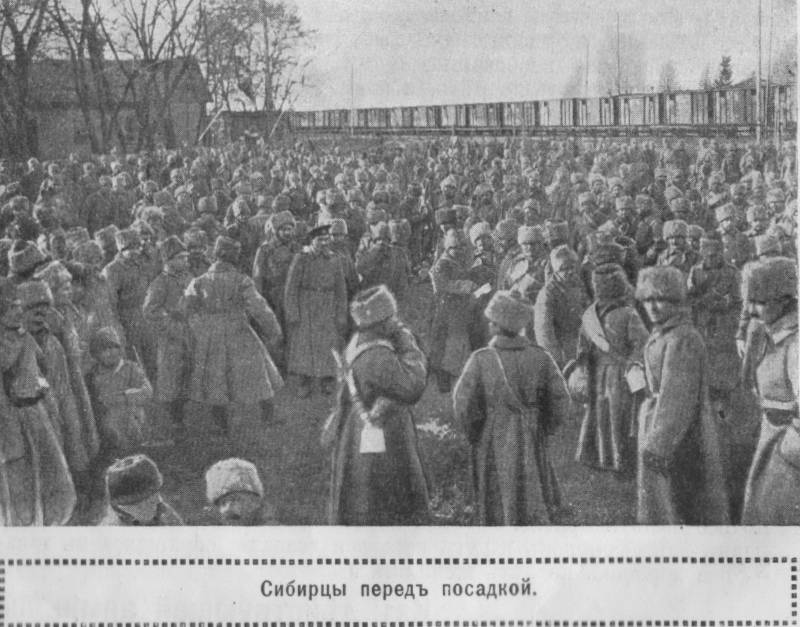
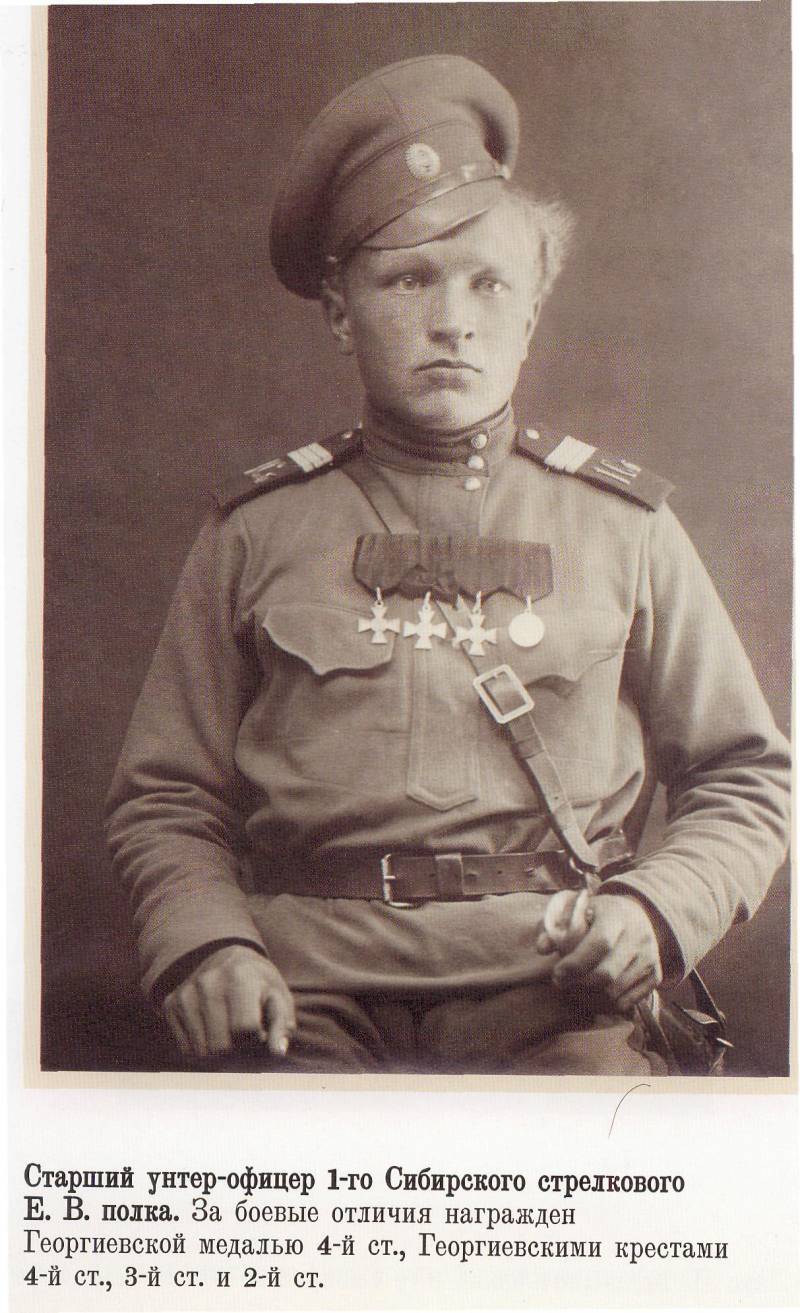
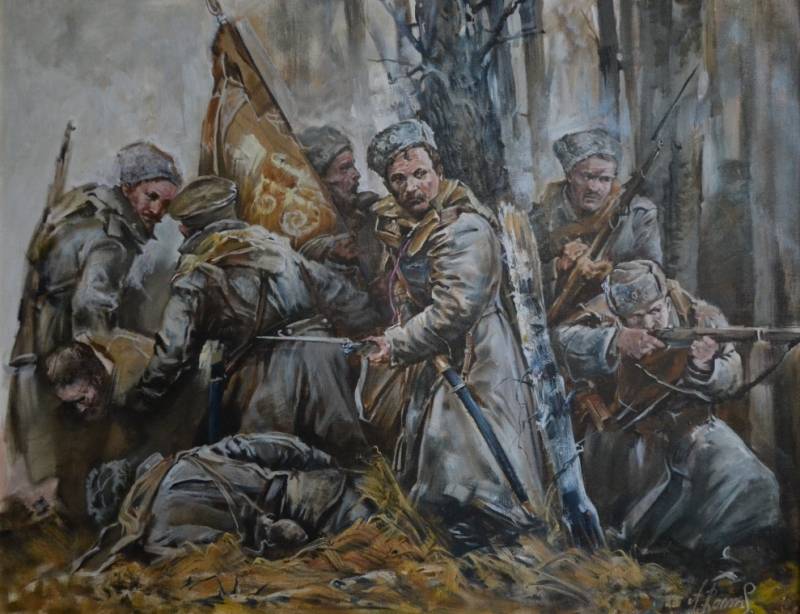
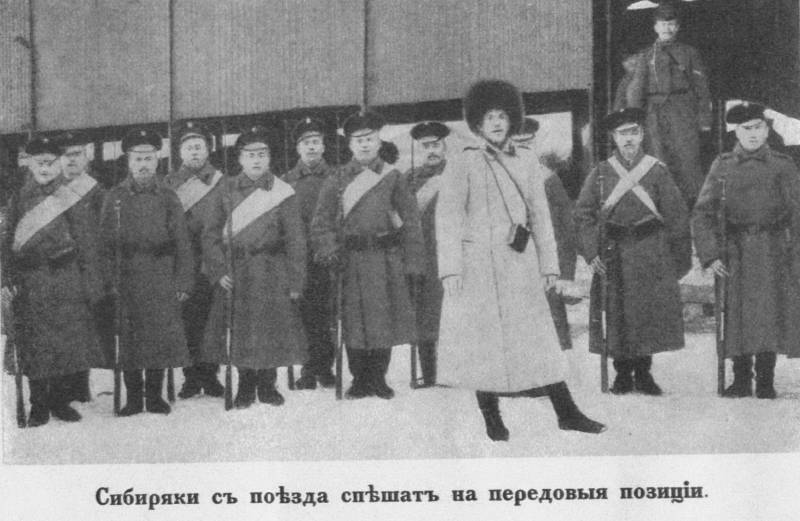
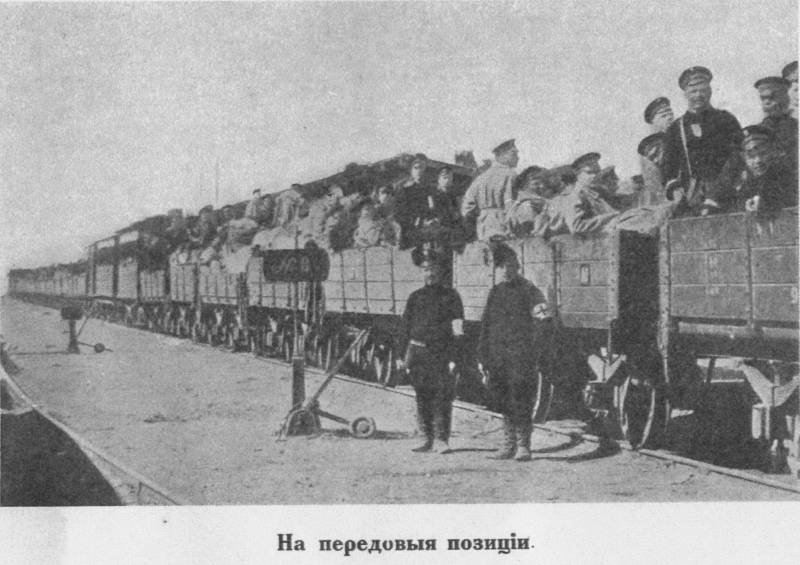
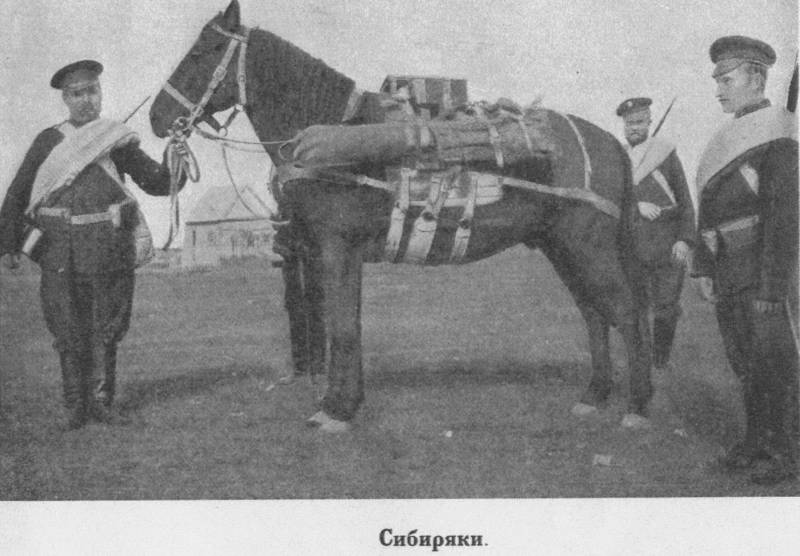
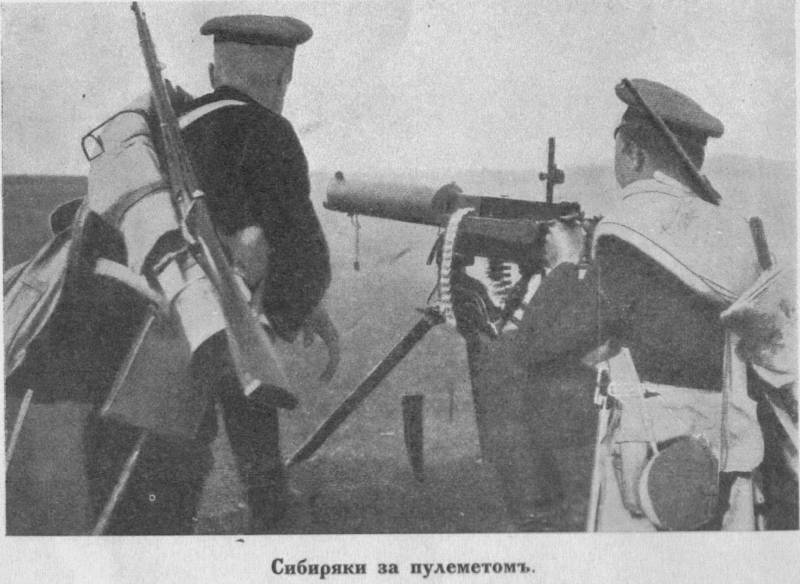
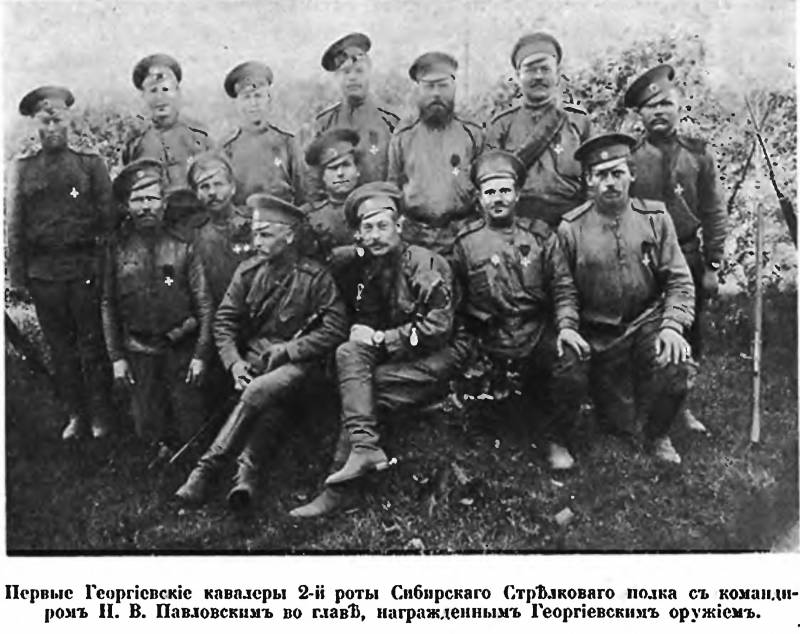
Information